 |
 |
 |
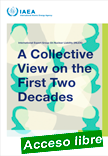 |
International Expert Group on Nuclear Liability (INLEX)
English ¦ STI/PUB/2086 ¦109 pages ¦ Date published: 2024
Since its establishment in September 2003, the International Expert Group on Nuclear Liability (INLEX) has played an important role in raising awareness and understanding of the nuclear liability instruments adopted under the IAEA’s auspices. Over the course of the past two decades, the group has advised on many issues related to nuclear liability and reached conclusions and made recommendations on possible gaps and ambiguities in the scope and coverage of the existing instruments.
|
To mark this 20th anniversary, this publication includes papers on several nuclear liability topics and the work of INLEX, contributed by some of the group's current members. The aim of this publication is to increase awareness of the role of INLEX, as well as nuclear liability as an important aspect of nuclear law. The publication is intended for nuclear law professionals, academics and practitioners as well as policy makers.
|
 |
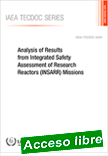 |
Analysis of Results from Integrated Safety Assessment of Research Reactors (INSARR) Missions
IAEA-TECDOC-2048 ¦ English ¦ 74 pages ¦ Date published: 2024
This publication provides an analysis of results from Integrated Safety Assessment of Research Reactors (INSARR) Missions conducted at research reactors during the period from 1995 to 2021. The analysis includes an assessment of trends, common issues, and other insights that are highly beneficial to Member States operating research reactors.
|
This publication is also useful for self-assessment of research reactor safety. This publication is intended for use by operating organizations of research reactors, regulatory bodies and other relevant organizations involved in the safety of research reactors.
|
 |
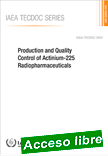 |
Production and Quality Control of Actinium-225 Radiopharmaceuticals
IAEA-TECDOC-2057 ¦ English ¦ 54 pages ¦ Date published: 2024
This publication includes existing experiences, lessons learned, challenges and future developments in the production of Ac-225 radiopharmaceuticals for Targeted Alpha Therapy (TAT). This publication will be utilized by all involved professionals in the Targeted Alpha Therapy field, specifying ideal production, formulation, quality control and regulatory aspects of various Ac-225 radiopharmaceuticals.
|
This publication suggests an approach for conducting a CBA for a nuclear newbuild project as part of a feasibility study. It presents a CBA framework which is built around four key steps to characterize a project: the project’s objectives, alternatives to the project, and the broad context; a financial analysis, including estimates of costs and profitability; an economic analysis, taking a broader view to include additional benefits and costs to society; and a sensitivity and risk analysis to assign a confidence level to key financial and economic indicators and identify the circumstances in which the project will generate value. The publication includes a case study to illustrate the framework’s application and describes, for example, the methodology used for valuing environmental benefits, such as emissions and pollution reduction. The publication is aimed at all stakeholders involved in the planning and decision-making on a nuclear new build project.
|
 |
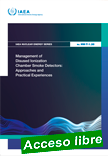 |
Management of Disused Ionization Chamber Smoke Detectors: Approaches and Practical Experiences
IAEA Nuclear Energy Series No. NW-T-1.26 ¦ English ¦ STI/PUB/2083 ¦ 87 pages ¦ Date published: 2024
Ionization Chamber Smoke Detectors (ICSDs) contain relatively small amounts of radioactive material and pose little hazard on an individual basis, even when disposed of in municipal landfills. However, many Member States have taken the decision to collect all or many of their country's disused ICSDs in one or more locations.
|
This often leads to the need for ICSDs to be managed as radioactive waste. The objective of this publication is to provide an overview of the management options for the ICSDs declared disused. It presents information on a variety of ICSD models. The approach and examples for landfill disposal of household ICSD, as consumer products exempted from regulatory control is discussed. It presents the management options for disused ICSD once they have been collected. Various options for the safe management of disused ICSDs are covered including advantages and disadvantages, based on Member State infrastructure and IAEA guidance and international safety standards.
|
 |
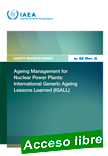 |
Ageing Management for Nuclear Power Plants: International Generic Ageing Lessons Learned (IGALL)
Safety Reports Series No. 82 (Rev. 2) ¦ English ¦ STI/PUB/2074 ¦ 155 pages ¦ Date published: 2024
The objective of this Safety Report is to provide information on the implementation of IAEA Safety Standards Series SSG-48, to support the ageing management and preparation for the safe, long-term operation of a nuclear power plant. It addresses ageing management of active and passive structures and components for water moderated reactors that can have an effect, directly or indirectly, on the safe operation of the plant and that are susceptible to ageing.
|
This publication is intended for ageing management and long-term operation specialists as well as nuclear power plant managers, regulatory bodies and technical support organizations.
|
 |
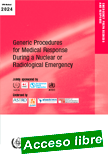 |
Generic Procedures for Medical Response During a Nuclear or Radiological Emergency
English ¦ EPR-Medical (2024) ¦ 141 pages ¦ Date published: 2024
The aim of this publication is to serve as a practical resource for planning the medical response to a nuclear or radiological emergency. It fulfils in part functions assigned to the IAEA under Article 5.a(ii) of the Convention on Assistance in the Case of a Nuclear Accident or Radiological Emergency (Assistance Convention), namely, to collect and disseminate to States Parties and Member States information concerning methodologies, techniques and available results of research relating to such emergencies.
|
.
|
 |
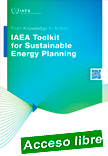 |
From Knowledge to Action: IAEA Toolkit for Sustainable Energy Planning
English ¦ IAEA/PAT/007 ¦ 27 pages ¦ Date published: 2024
This toolkit, produced for the G20 under Brazil's Presidency in 2024, is written to inform the Energy Transitions Working Group (ETWG) within the G20 Sherpa Track, as well as the wider international energy and climate change community. This publication provides an overview of the important role the IAEA plays in enhancing national and regional capacities for energy system analysis and planning in emerging markets and developing economies (EMDEs).
|
This includes conducting capacity building activities with the transfer of energy planning tools and methodologies. These activities encompass distance and in-person training sessions, technical assistance, and addressing overarching energy strategies and transitions to low-carbon economies. The goal is to enhance knowledge and strengthen skills that many EMDEs currently lack, facilitating informed decision-making and policy development. The toolkit also showcases successful applications of its methodologies through case studies and collaborations with other international, regional, and national institutions, illustrating the positive impact of integrated energy planning on creating national policies and achieving sustainable development goals.
|
 |
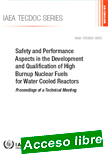 |
Safety and Performance Aspects in the Development and Qualification of High Burnup Nuclear Fuels for Water Cooled Reactors
IAEA-TECDOC-2053 ¦ English ¦ 156 pages ¦ Date published: 2024
This TECDOC aims at illustrating the status in addressing safety and technological challenges encountered in the development, qualification and licensing of HBU nuclear fuels for Water Cooled Reactors (WCRs), summarizing the discussions held at a Technical Meeting organized by the IAEA in November 2022.
|
This publication will provide useful insights for a future revision of IAEA Safety Standards Series No. SSG-52, Design of the Reactor Core for Nuclear Power Plants, as industry trends strongly signal a need to broaden the scope of this safety guide to include high burnup nuclear fuels. This publication is intended for Technical and Scientific Support Organizations (TSOs), regulatory organizations, operators, and research organizations.
|
 |
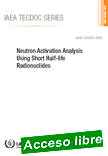 |
Neutron Activation Analysis Using Short Half-life Radionuclides
IAEA-TECDOC-2055 ¦ English ¦ 100 pages ¦ Date published: 2024
Neutron activation analysis (NAA) is the technique most widely used in research reactors worldwide. Six decades of experience in NAA has resulted in commonly applied analytical protocols, with measurements at about two to seven days and at three weeks after neutron irradiation. NAA with short half-life radionuclides enables an analysis turnaround time of one working day in principle.
|
It also enables the detection of many important elements that cannot otherwise be measured with NAA based on longer half-lives. It may therefore provide competitive and, in some cases, even unique opportunities for an NAA facility. This opportunity is not fully seized by NAA laboratories due to the technical and analytical difficulties involved. This publication addresses all aspects of the implementation and optimization of NAA with short half-life radionuclides.
|
 |
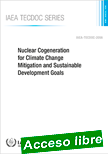 |
Nuclear Cogeneration for Climate Change Mitigation and Sustainable Development Goals
IAEA-TECDOC-2056 ¦ English ¦ 112 pages ¦ Date published: 2024
As countries plan their low carbon energy strategies for the future, nuclear cogeneration—using nuclear power plants not only for electricity generation but also to provide simultaneously electricity and heat for applications such as district heating, hydrogen production, water desalination or to support industrial processes—is emerging as an attractive option for decarbonizing of various energy consuming sectors, while also boosting the efficiency of nuclear power plants.
|
The publication includes an overview on the use of nuclear energy for cogeneration applications to achieve a future with clean and sustainable energy. It aims to increase the understanding of the role of nuclear cogeneration in climate change mitigation and to showcase the experience available in several Member States in the field of nuclear cogeneration. The publication is intended for decision makers, managers and engineers involved in nuclear cogeneration projects.
|
 |
| |
|
|

|
|
|
| |
|
|
| |
| |
|
|
| |
| |
|
|
| |
| |
|
|
|
| |
| |
